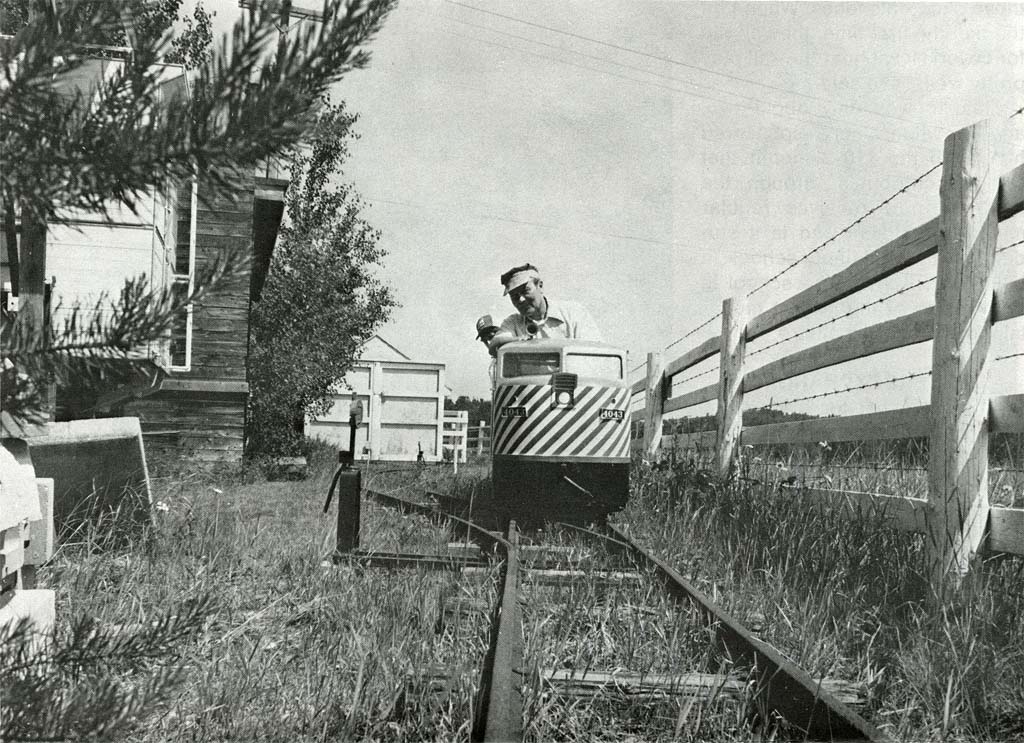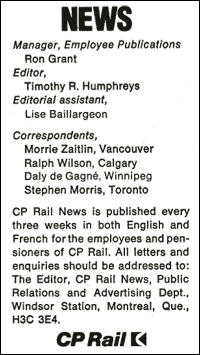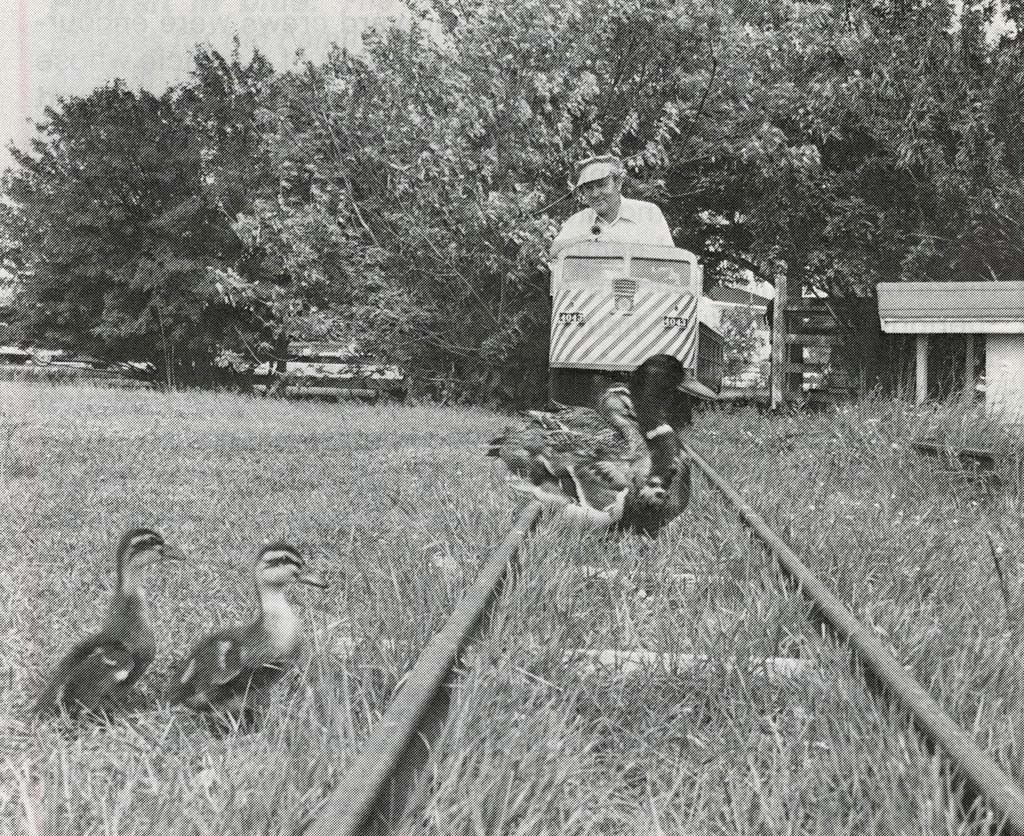|
|
 |
Vol. 12
Number 2 Feb 3, 1982 |

Chapleau Ontario - You won't find the Demers sub-division listed in CP Rail's timetable. But it's here.
The 1/3 mile line runs passenger service on an "as required" basis. It is the longest privately owned 15 inch gauge railway in Canada.
It's also the dream of CP Rail employee Jim Demers.
Jim, a 36 year veteran locomotive engineer, constructed the miniature railway more than 20 years ago to entertain his five children.
But although his children have grown up, the man who has a passion for building things still operates the little railway.
"It was an idea that popped into my head at the time," said Jim. "Most children have HO gauge railways on little boards. I thought this would be different. Besides, I enjoy it still."
Constructing the mini CP Rail line wasn't easy. For many months Jim had to search across Canada and the United States for proper rail to construct the branch line.
He finally managed to find 12 pound rail from mines in northern Ontario and Quebec. "Rail this light is not only rare but expensive," said Jim. "I had the rail, the next challenge was building a level roadbed for the line."
NUMBER 4043
It took a year to complete the line. In addition to the main line, which snakes across his five acre property, Jim had also built a turnaround and spur line to a car shed.
With the track laid, it was onto the next phase.
Self-taught in wood and metal work, he began building a power unit to pull the passenger cars, also built from scratch. The passenger car can carry six children or three adults.
"The engine had to be powerful enough and yet safe and easy to operate," said Jim. "The sheer weight would make it handle like a train and one mistake could create a derailment."
Jim decided to construct a replica of the CP Rail Alco series engines built in the 1950s and used in freight and passenger service.
The engine, numbered 4043, was recently repainted into the new CP Rail colours.
A gasoline engine powers the four sets of wheels which provide direct traction. The automobile transmission he used has three forward speeds and one reverse speed which are connected by chains to universal joints.
Jim even built the braking system using a compressor from a refrigerator. The system holds 110 pound pressure which activates a system similar to that of a real train.
Wheels for the miniature train had to be ordered from North Carolina. Jim ordered 43 wheels, just in case he decided to expand the railway. The locomotive features roller bearings while the passenger cars have plain bearings.

LACK OF PASSENGERS
With a grin, Jim said the maximum permissible speed is about 10-15 mph, but he remembers once or twice the train did 30.
The railway's lack of passengers, partly because his children have grown up, means the little train doesn't operate as frequently as it used to.
But when the family gets together, the grandchildren and children make sure there's no shortage of locomotive engineers or passengers.
To make the trip more fun, Jim ran the line through his little farm. Passing through gates, passengers are treated to sudden stops to allow mother duck and her brood to cross the track. Occasionally, the conductor must remove a prize chicken that has nested in the middle of the right-of-way.
Safety is always a concern on the Demers sub-division, just as on CP Rail. In it's 20 year operation there has been only one minor derailment... and that was at a switch.
Jim's wife notes he's a remarkable man. In between his job of hauling 100 car freight trains out of Chapleau, Jim has found time to build a gas station, a house, and a hangar for his airplane.
His next project? You guessed it. Build his own airplane.

 and is reprinted here with their permission.
All photographs, logos, and trademarks are the property of the Canadian Pacific Railway Company.
and is reprinted here with their permission.
All photographs, logos, and trademarks are the property of the Canadian Pacific Railway Company.